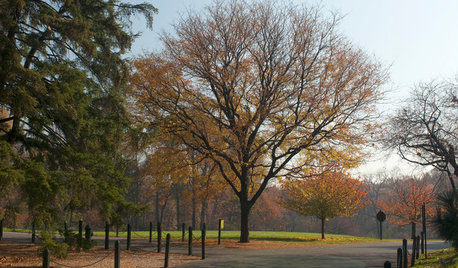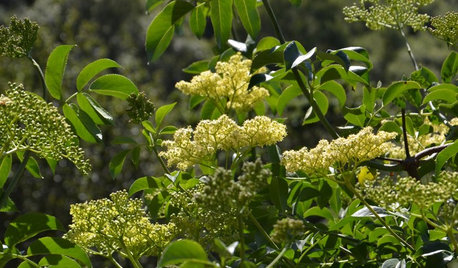Mulberry trees
catherinet
19 years ago
Related Stories

FALL GARDENING11 Trees for Brilliant Fall Color
Give your landscape the quintessential look of autumn with the red, orange and yellow leaves of these standouts
Full Story
EDIBLE GARDENSHow to Grow 10 Favorite Fruit Trees at Home
Plant a mini orchard in fall, winter or early spring to enjoy fresh-off-the-tree fruit the following year
Full Story
GARDENING GUIDESGreat Design Plant: Honey Locust Tree
No, it doesn't actually produce honey. But its dappled light and tolerant nature are treats in city and country settings alike
Full Story
TREES7 Deer-Resistant Flowering Trees to Plant this Fall
If you live in a neighborhood with roaming deer, consider these beautiful trees that won't tempt hungry guests
Full Story
GARDENING GUIDESPlant Black Cherry Trees for the Birds and Bees
Plant Prunus serotina in the Central and Eastern U.S. for spring flowers, interesting bark and beautiful fall color
Full Story
GARDENING GUIDESGreat Design Plant: Sambucus Nigra Caerulea for the Birds
Blue elderberry is a favorite of birds and other wildlife in its native California
Full Story
PATIO OF THE WEEKYear-Round Gazebo Glory in Toronto
Lilacs in spring, snuggly blankets in winter. With weatherproof panels and seats aplenty, this gazebo is guest ready all year long
Full Story
LANDSCAPE DESIGNGreat Design Plant: Retreat to the Shade of Hardy Catalpa
Big foliage and a towering height provide a shady respite in summer, but that's not all hardy catalpa offers dedicated gardeners
Full Story
GARDENING GUIDESGreat Design Plant: Sambucus Nigra
Common elderberry is a highly adaptable shrub from the eastern U.S., with berries galore for wildlife and humans alike
Full Story
DECORATING GUIDES8 Wonderful Ways to Splurge With Silk
Treasured for its luster and elegance, this fabric far outshines its imitators in all kinds of uses around the home
Full Story






fairy_toadmother
joepyeweed
Related Professionals
Medford Landscape Contractors · Dallas Landscape Contractors · Hayden Landscape Contractors · La Verne Landscape Contractors · Mashpee Landscape Contractors · Siloam Springs Landscape Contractors · Oxon Hill Landscape Contractors · Peoria Fence Contractors · Burlington Fence Contractors · Nampa Fence Contractors · Palmetto Bay Fence Contractors · Prairieville Fence Contractors · Lincoln Siding & Exteriors · Bolingbrook Siding & Exteriors · Fairfax Siding & Exteriorslycopus
LauraZone5
catherinetOriginal Author
LauraZone5
too_many_pets
LauraZone5
too_many_pets
LauraZone5
too_many_pets
lycopus
LauraZone5
ccdry
lycopus
LauraZone5
LauraZone5
viburnumvalley
LauraZone5
too_many_pets
LauraZone5
bengz6westmd
ahughes798
terri_ks
Flowerkitty
skeeterbug_2007
ziggy___
cougiecat
njbiology
LSTABLE
s8us89ds
lukifell